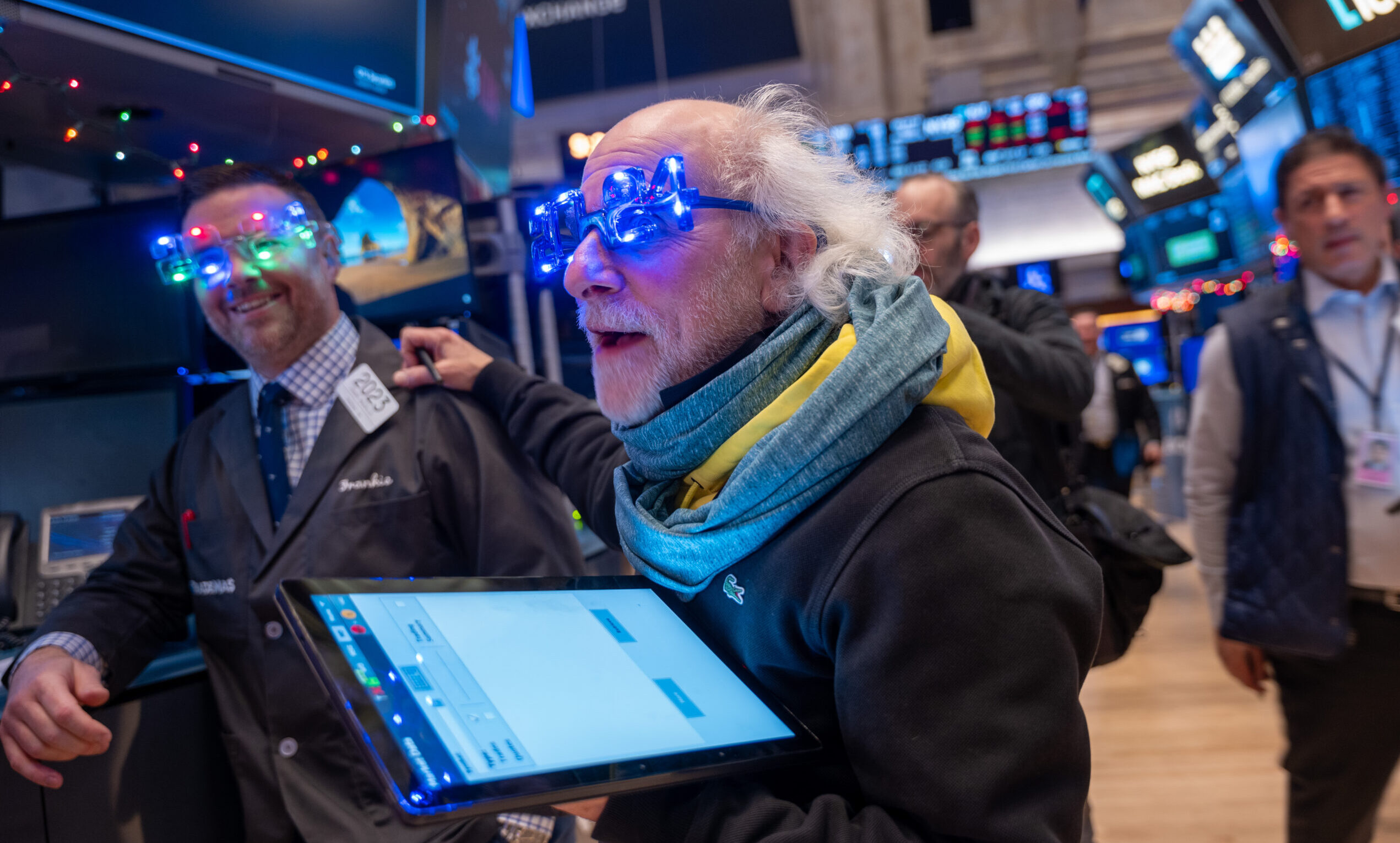Global markets ended 2023 at peak optimism. With stock markets recording their strongest year since 2019, the US was a particular standout, the S&P 500 index closing the year nearly 25% higher than it started. Reflecting the outsized contribution that a handful of high-tech companies made to this startling performance, the Nasdaq index did even better, rising by nearly half on the year — beer money next to Bitcoin’s near-tripling.
But lest one read too much into all this and start prophesying a new Roaring Twenties, it’s worth noting that bond prices in particular can be quite volatile around the start of a new year. Besides, the simple fact is that despite all the talk of the extraordinary tightening carried out by central banks this past year, there’s still a massive amount of money in global markets — the accumulation of years of unprecedentedly loose monetary policy. With all this cash around, the burst of buying was just awaiting an opportunity to break out. The Powell pivot duly provided it.
But that points to the paradox of this optimism. If the economy stays out of recession and all that money starts coming back into circulation, it seems improbable that inflation will stay down. In that case, interest rates will not be headed to the low levels suggested by current market pricing. But if inflation does come down because the economy sinks into recession, the heady optimism on earnings justified by current prices seems misplaced.
Given how little we know of what lies ahead, and given how badly wrong most Wall Street forecasters got 2023 when they started the year predicting a recession that never came, it shouldn’t surprise us that their forecasts for the stock market this year range from crashes in the order of 30% to double-digit rallies. It might be a good time to call in the proverbial dart-throwing monkey.
Adding to the uncertainty is that 2024 will see volatility in both politics and geopolitics. Between the risks of an escalation in the Middle East and the unpredictable course of the war in Ukraine, the possibility of some event upending global markets is higher than usual.
Then there’s the American election, about which the only certain thing that can be said is that it will provide plenty of uncertainty. The presidential campaign, already bound to be ugly and divisive, will be made worse by Donald Trump’s various court cases. Moreover, the prospect of a Trump re-election could rattle markets, not because investors dislike what he proposes but because they can’t be sure what it will be. The plans that Trump is making are a great deal more radical than his first term, which will again fuel the uncertainty leading into the November election.
Put all this together and markets may want to follow the heavy round of champagne with which they toasted the end of 2023 with a steady course of painkillers. 2024 is likely to offer them a bumpy ride.











Join the discussion
Join like minded readers that support our journalism by becoming a paid subscriber
To join the discussion in the comments, become a paid subscriber.
Join like minded readers that support our journalism, read unlimited articles and enjoy other subscriber-only benefits.
Subscribe